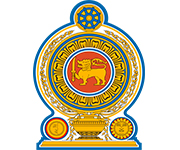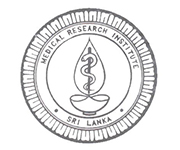Medical Research Institute and the war against Pandemic Influenza A (H1N1)
A novel Influenza A H1N1 virus was first identified on 15th April 2009 in Mexico. WHO declared the onset of a pandemic due to this virus on 11th June 2009. Just five days later, on 16th of June Sri Lanka reported the first case of Pandemic A (H1N1) diagnosed at National Influenza Centre, MRI.
Influenza A (H1N1) pandemic continued to spread rapidly between May 2009 and April 2010. A total number of 3044 samples were tested at MRI during this time out of which 648 (21.3%) reported positive. Forty eight deaths occurred during the first wave in Sri Lanka.
A second wave of this pandemic started in October 2010 and continued up to February 2011.
During both waves patients presented with fever, cough, cold, sore throat, difficulty in breathing, diarrhoea and vomiting. Young adults up to 30 years were mainly affected with an equal male to female ratio. Highest incidence was from October to January coinciding with the highest rainfall in the country. Western and Central provinces were affected mainly. Complications that were seen during are pneumonia, encephalitis and myocarditis. Deaths were more in patients with co-morbidities such as immune-suppression and chronic lung diseases. More maternal deaths were also reported.
As the world continues to live under the constant threat of influenza pandemics and spread of highly pathogenic Avian Influenza, the WHO recognised the need to strengthen influenza laboratories and to establish efficient surveillance systems in member countries. Hence WHO identified the respiratory laboratory at MRI as the National Influenza Centre (NIC) for Sri Lanka and upgraded this lab and the molecular laboratory at MRI accordingly. Real time RT- PCR which is a molecular diagnostic method was introduced for the first time and more than 6000 samples have been tested with this method since then.
Twenty sentinel sites were identified to cover all the provinces of Sri Lanka for surveillance activities and Infection control nurses of respective hospitals were trained on sample collection and transport.
In addition WHO initiated External Quality assurance (EQA) programme to monitor the performances of the upgraded laboratories. Performance of the MRI lab in January 2009 was 100%. Swine flu samples were also included in the EQA panels since June 2009 to assess the laboratory’s ability to identify this virus.
MRI is open 24 hours a day to accept samples. This was made possible due to the dedication of the staff. Positive test results are informed daily by telephone to the sender and the epidemiology unit. Weekly data is forwarded to the Global Influenza Surveillance Network (GISN) by Flunet. Monthly data is sent to the sentinel sites and Epidemiology unit. Technical committee meetings take place monthly to discuss the progress as well as to plan the future activities.
Further improvement is required in data reporting and networking. Sub national laboratories too should be upgraded in the future.
Dr. G. Wickramasinghe
Consultant Virologist
Head/Dept of Virology
Medical Research Institute




